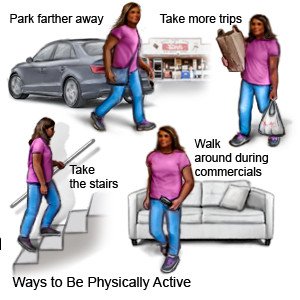Intragastric Balloon (Igb) Procedure for Weight Loss
Medically reviewed by Drugs.com. Last updated on Aug 4, 2025.
An intragastric balloon (IGB) procedure uses a balloon that is placed down your throat into your stomach. The balloon is left in your stomach between 4 and 6 months. You will follow a supervised 12-month diet and exercise plan and see your weight loss team monthly.
DISCHARGE INSTRUCTIONS:
Call your surgeon if:
- You have pain, nausea, or vomiting that continues even after you take medicine.
- The color of your urine changes to blue-green. This means your balloon has leaked.
- You are constipated or cannot pass gas.
- You have new pain that is different than pain after your procedure.
- You have sudden swelling in your abdomen.
- You no longer feel full.
- You have increased hunger.
- You have questions or concerns about your procedure or care.
What to eat after your procedure:
You may not feel like eating for the first week. This is normal. Your surgeon or dietician will go over your eating plan before your procedure. They may tell you the following:
- Stage 1 (for about 3 to 5 days after placement):
- Drink at least 8 cups (64 ounces) of only clear liquids. Examples include water, sugar-free sports drinks, tea, broth, popsicles, or gelatin, and apple, white grape, or cranberry juice. Fruit juices should have no added sugars. You should mix ½ water with fruit juices.
- Drink 1/3 of a cup at a time.
- Sit upright. Take small sips. Wait for 1 or 2 minutes between sips.
- Drink warm liquids.
- Avoid:
- Cold liquids
- Carbonated drinks
- Sugary drinks
- Citrus juices such as orange, pineapple, lemonade
- Tomato juice
- Alcohol
- Caffeinated drinks such as coffee and energy drinks
- Stage 2 (you may need a blender or food processor):
- Protein shakes
- Greek yogurt (plain), sugar-free pudding
- Vegetable juice
- Pureed fruits and vegetables
- Blended soups
- Avoid:
- Foods with large chunks
- Sugary foods such as desserts
- Carbonated drinks
- Stage 3 (foods that can be easily mashed with a fork):
- Cottage cheese, ricotta cheese, string cheese
- Scrambled eggs, beans, deli meat, tofu
- Avocado, well-cooked or mashed vegetables
- Soft fish, crab, canned chicken, tuna, or salmon
- Stage 4 (solid foods):
- Eat a variety of healthy foods. Focus on lean protein and non-starchy vegetables.

- Eat small meals.
- Drink at least 64 ounces of water every day.
- Keep a food journal.
- Limit the amount of alcohol you drink.
- Avoid:
- Sweets and processed foods
- Foods made from dough, such as bread (it may stick to your balloon)
- Eat a variety of healthy foods. Focus on lean protein and non-starchy vegetables.
Healthy tips to help with cramping and nausea:
- Sit tall when you eat or drink. Do not slouch.
- Eat slowly. Chew your food well before you swallow.
- Drink at least 64 ounces of water every day.
- Do not drink liquids for 30 minutes before you eat. Wait for 30 minutes after you eat to drink liquids.
- Stop eating if you feel full or have heartburn.
- Do not eat for 3 hours before bed.
- Use pillows to prop yourself up at night to sleep if you have heartburn.
Activity expected:
Your weight loss team will help you make a plan for physical activity that you will be able to do. You may not be able to start your activity until a week after your procedure. The activity will include something you can do 30 minutes a day, 5 days a week. It may start with walking and increase slowly. Continue the activity even after your balloon is removed. Exercise activity will help prevent weight gain.
 |
Follow up with your doctor or surgeon as directed:
Write down your questions so you remember to ask them during your visits.
© Copyright Merative 2025 Information is for End User's use only and may not be sold, redistributed or otherwise used for commercial purposes.
The above information is an educational aid only. It is not intended as medical advice for individual conditions or treatments. Talk to your doctor, nurse or pharmacist before following any medical regimen to see if it is safe and effective for you.
Further information
Always consult your healthcare provider to ensure the information displayed on this page applies to your personal circumstances.
